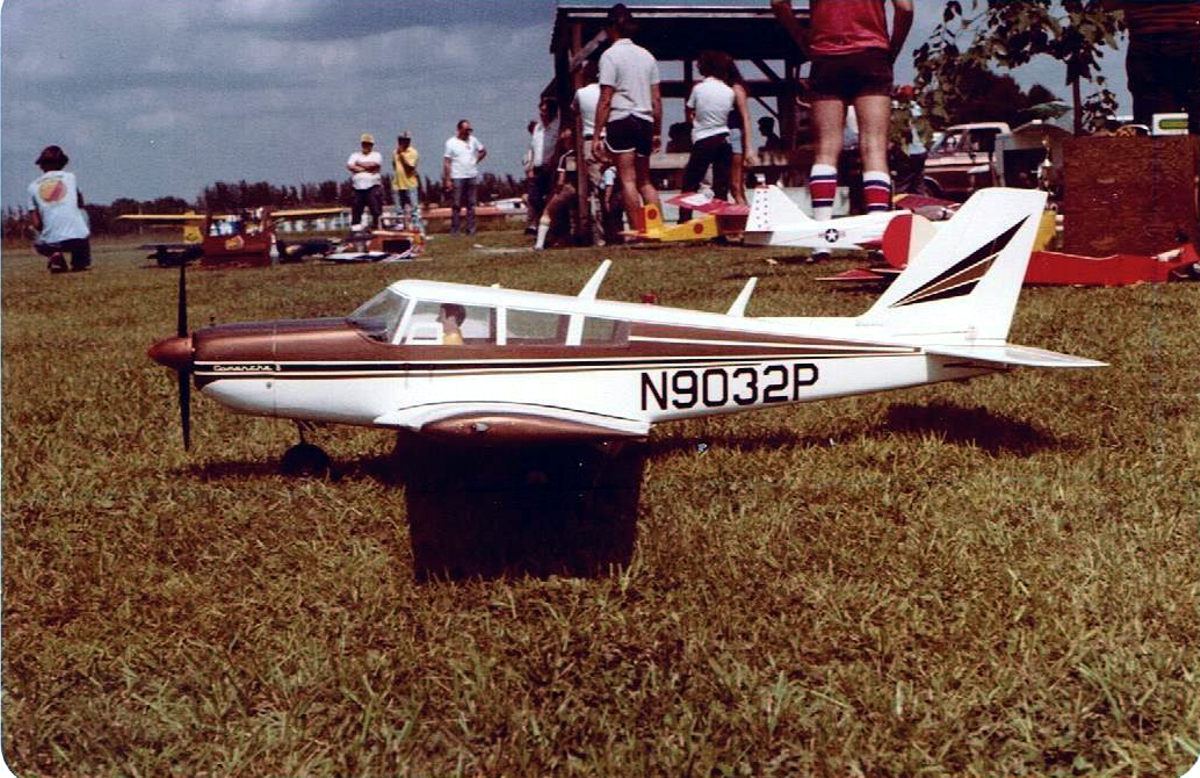
Comanche 32 Papa - N9032P - Page 3: Stafford Comanche Radio-Controlled Model
A day at the KISSIMMEE VALLEY MODEL CLUB FIELD on US 192/US 441 across from
the entrance to the Florida Turnpike. My first Stafford kit seen here had
a pilot inside.

One of the model club members at the Kissimmee Valley Model club was a Florida State trooper. He stopped by the flying field one day when I had the model flying in the air with the landing gear retracted for maximum speed. I made a low pass down the grass strip at about 10 feet above the runway heading directly toward the patrol car. The trooper used his PA speaker saying "121 MPH". The radio for this first airplane used a Futaba six-channel transmitter and receiver. This first model was destroyed in a crash in 1982.
OCTOBER 25, 2021: I am using a couple of photos of the SECOND Stafford Comanche B radio control model from two images I took during the construction of my NEXT airplane kit from Van's Aircraft. I have been flying my Van's RV-9A since June 9, 2005. The two photos and text below are from September 13, 2003.
September 13, 2003: I finished the work on the firewall this morning and put it back on the fuselage. I decided it was time to photograph my RC-model Comanche B airplane since I have mentioned it in the past. It has the Piper color scheme from 1966, on which I am basing my RV-9A color choices. You can see that I put the flaps down part way.
I
spent most of the day fabricating parts for the forward section between the wing
spar bulkheads and the firewall. Not much exciting to photograph about
that. I did take the forward skin from the underside off and cut in the
holes for the clearance of the main landing gear. I will have to
custom-fit those holes to the welded steel structure as I re-install the forward
bottom skin.
You can't see it in this photo above, but there is a wing walk area that is on the other side of the fuselage of the model. Those Piper's only have one door on the passenger side. This model was built using the Dave Stafford kit in 1986, which has a fixed horizontal stabilizer that uses an oversized trim tab as the elevator. The real Comanche has a full flying stabilator tail with a trim tab that has half the chord depicted here. I modified the kit with the third side window to look like a "B" model Comanche in 1/6th scale, although it is 1 inch too short, since the kit I used was a standard Comanche kit. The full-sized Comanche B is 6 inches longer than standard Comanche single-engine airplanes. The wing span of the model is 72 inches, with flaps, wing tip and tail lights, strobe lights, and landing lights that come on when the landing gear is extended. The flying weight with all batteries is 10 pounds, and it cruises at 120 MPH using an OS Max 61 Schneurule-ported engine turning an 11x7-inch prop fitted with a custom-built Pitts-style muffler with dual exhaust pipes. It uses a 6-channel Airtronics radio to run everything. And no, I have not flown it in a number of years -- it is a trophy of my time before getting my pilot's license. Besides, I will probably use it as a paint scheme model when I take the RV-9A to the paint shop.
October 24,2021: This second model seen above has a few extra features. The long-wire antenna from the cabin area to the top of the tail is made of steel music wire that I covered with super glue to keep it from rusting. That white wire covering was used to simulate the insulator close to the tail. It is difficult to see here, but there is a pair of VOR antenna "dipole rods" mounted to the top of the tail. There is also an ELT transmitter antenna back there on the fuselage. Look closely behind the two white NAV/COM antennas to see it.
The model Comanche kit seen here was donated to a man living in Cynthiana, Kentucky on October 27, 2021. He flew in the real N9032P when he was young. He flies radio-controlled models and wants to keep this model I built to show it to others in this part of Kentucky.
NOW, BACK TO THE 1980's ...
Below is my first Jack Stafford RC model kit with a wing span of 6 feet weighing 10 pounds. The engine was an OS-MAX 61 Schneurule-ported model for more power. A friend of mine at the metal shop where I worked created a custom PITTS style muffler for this airplane with DUAL exhaust pipes I created from some bathroom copper plumbing pipes that were silver-coated. This was in 1980 and the first version of the RC model. It has retractable landing gear, and wing tip red and green marker lights. The two landing lights were controlled by a micro switch activated when the landing gear was extended. The forward-facing landing lights are mounted in the wing near the wing tip fairings. A red "strobe light" is on top of the fuselage and a white strobe light on the bottom. The strobe light bulbs are 6-volt flashlight bulbs. To get the very BRIGHT light I wanted, I used a timer chip driving a power transistor that would turn on for a ONE MILLISECOND PULSE from a 12-volt battery pack made from two six-volt flat pack batteries from Polaroid instant film packs. There are two "grain-of wheat" white lights on the tail with one on top of the elevator, and one on the bottom side by the elevator. The super mono-coat covering is metallic brown with black trim on a white overall color. The landing lights, wing tip lights, and the grain-of- wheat tail lights operated from a pair of 1.5-volt D-Cell batteries mounted near the main wing spar inside the fuselage.
The white long-wire antenna connected to the top of the tail is a
small gage copper wire with white plastic covering. The airplane first
flew with a wooden propeller.
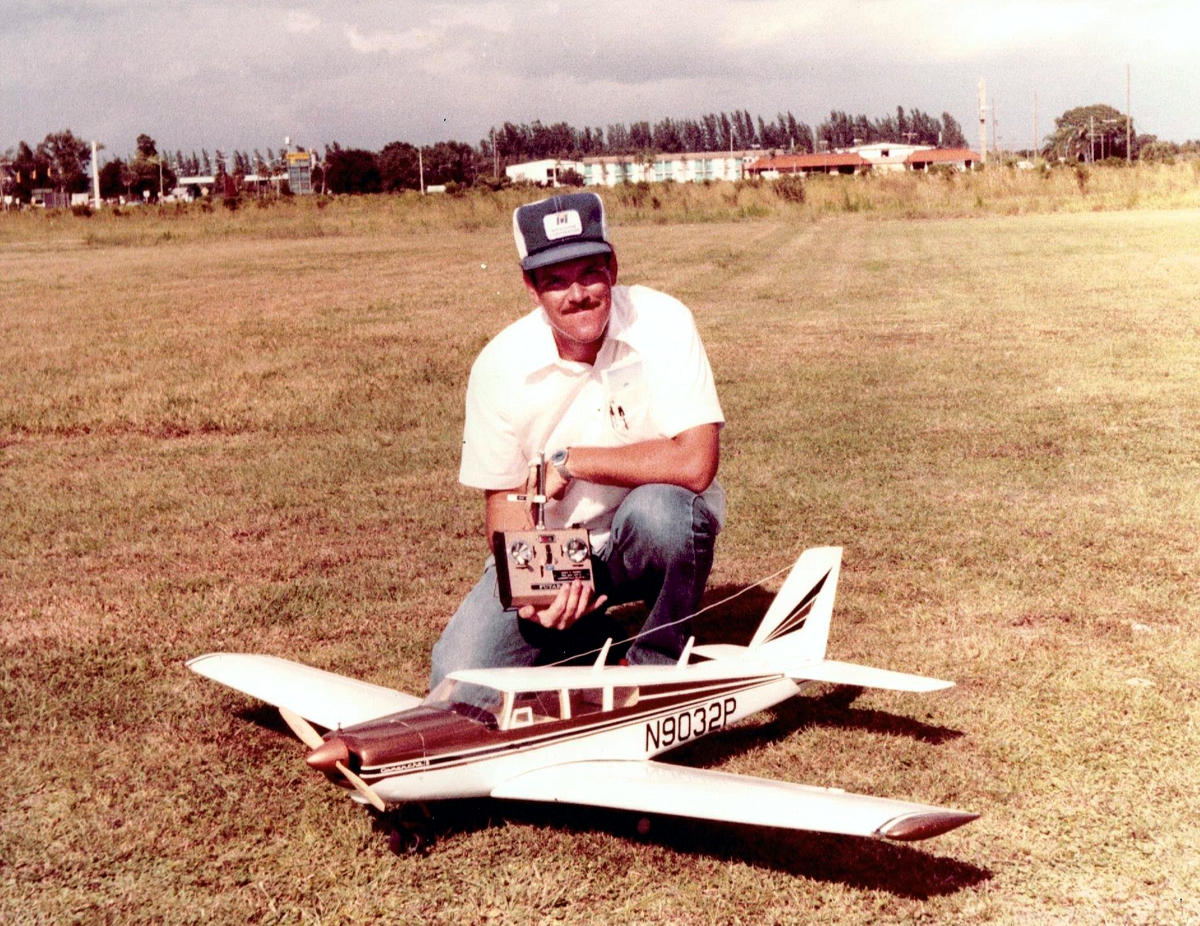
You can see a composite propeller in the image below.
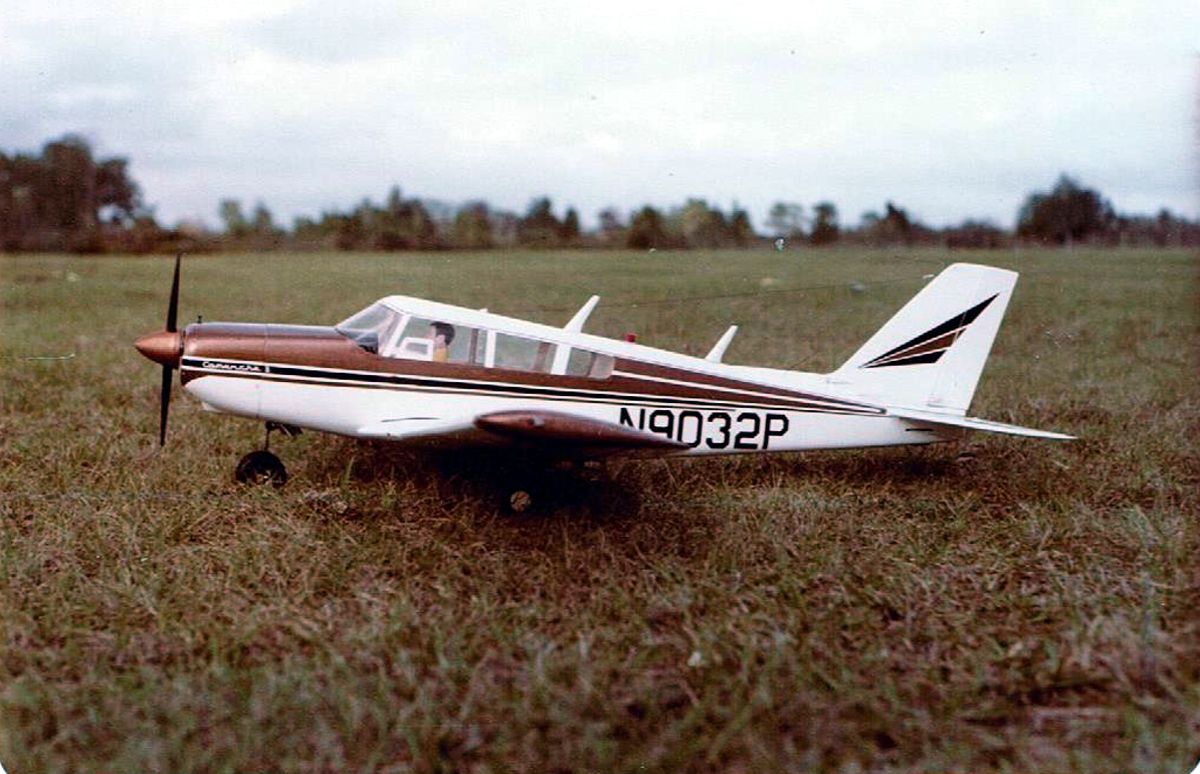
This angle view below gives a better look at the
aspect ratio of the wings.
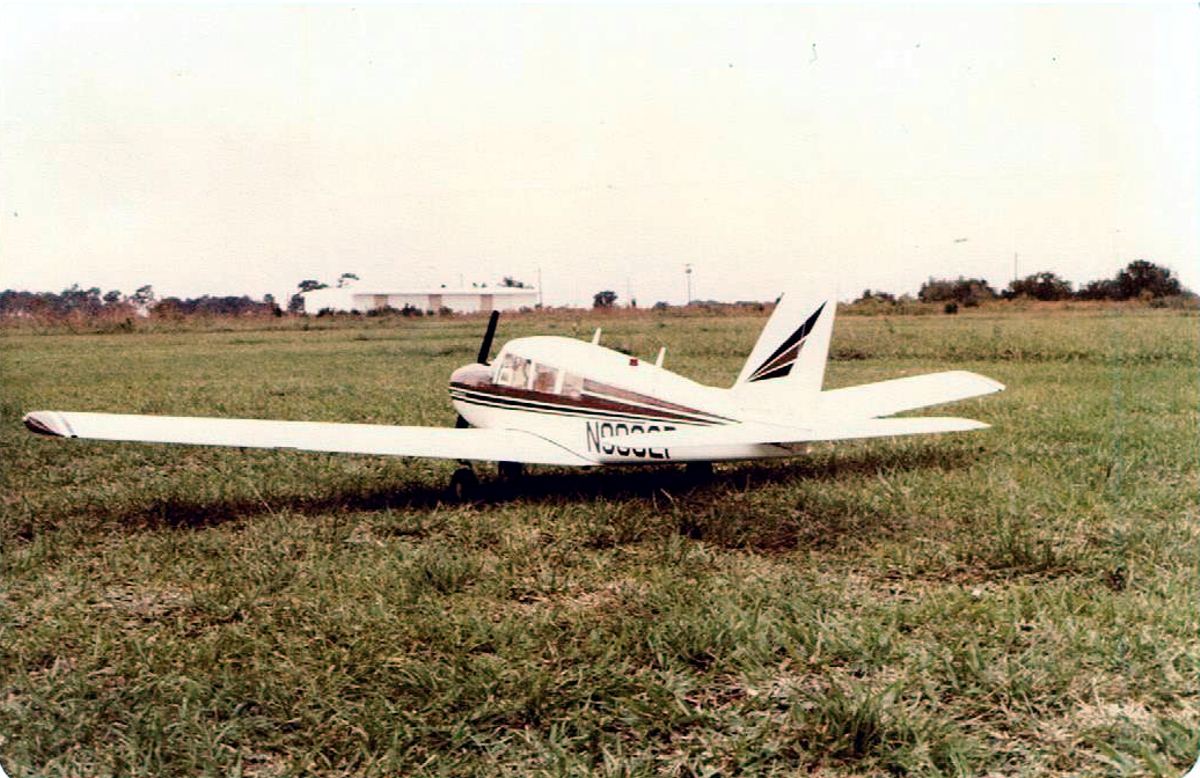
This image was taken late in the day with partly cloudy conditions.
I had turned on the lights to see how they would look. The shutter popped
at the right time to catch the flash of the red beacon on top of the
fuselage. The airplane was in a climb that put the belly strobe light out of
view. Both rear tail lights are visible as is the marker light on the
right wing tip.
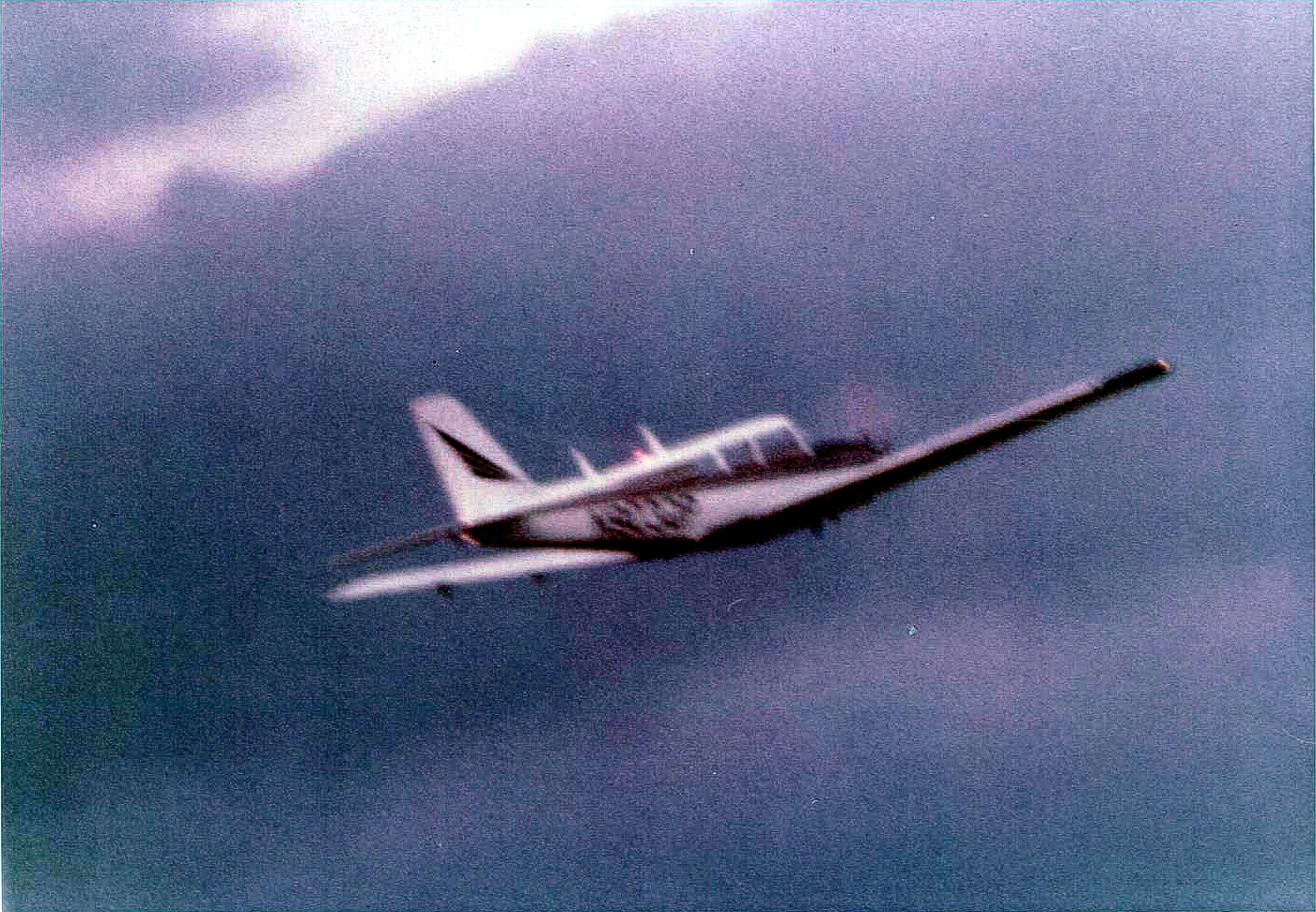
Here are two awards from the 14th Annual Tangerine International RC
Championships held on December 31, 1981.
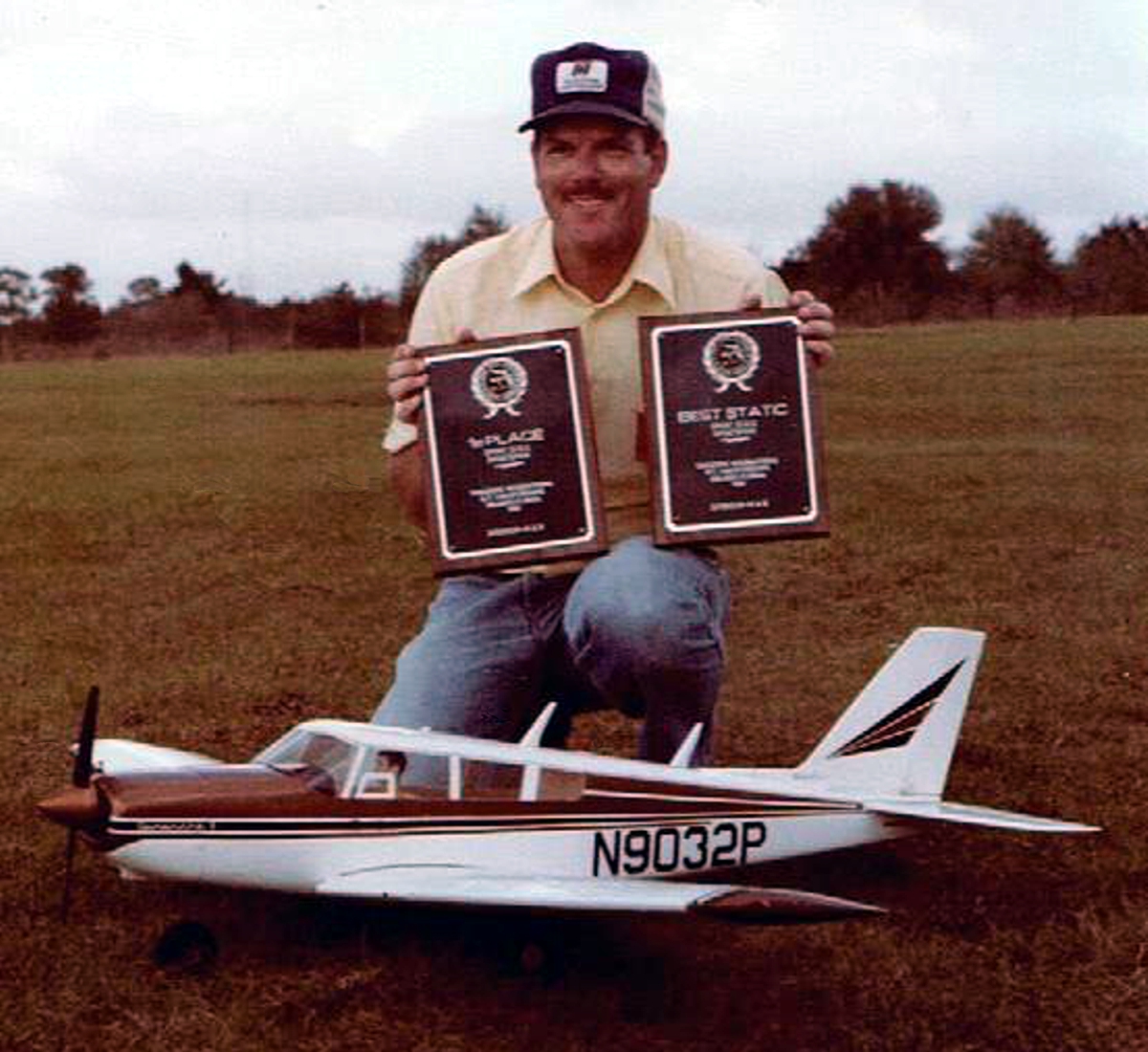
Here is the printed flyer that was mailed to the various radio-controlled model airplane clubs.
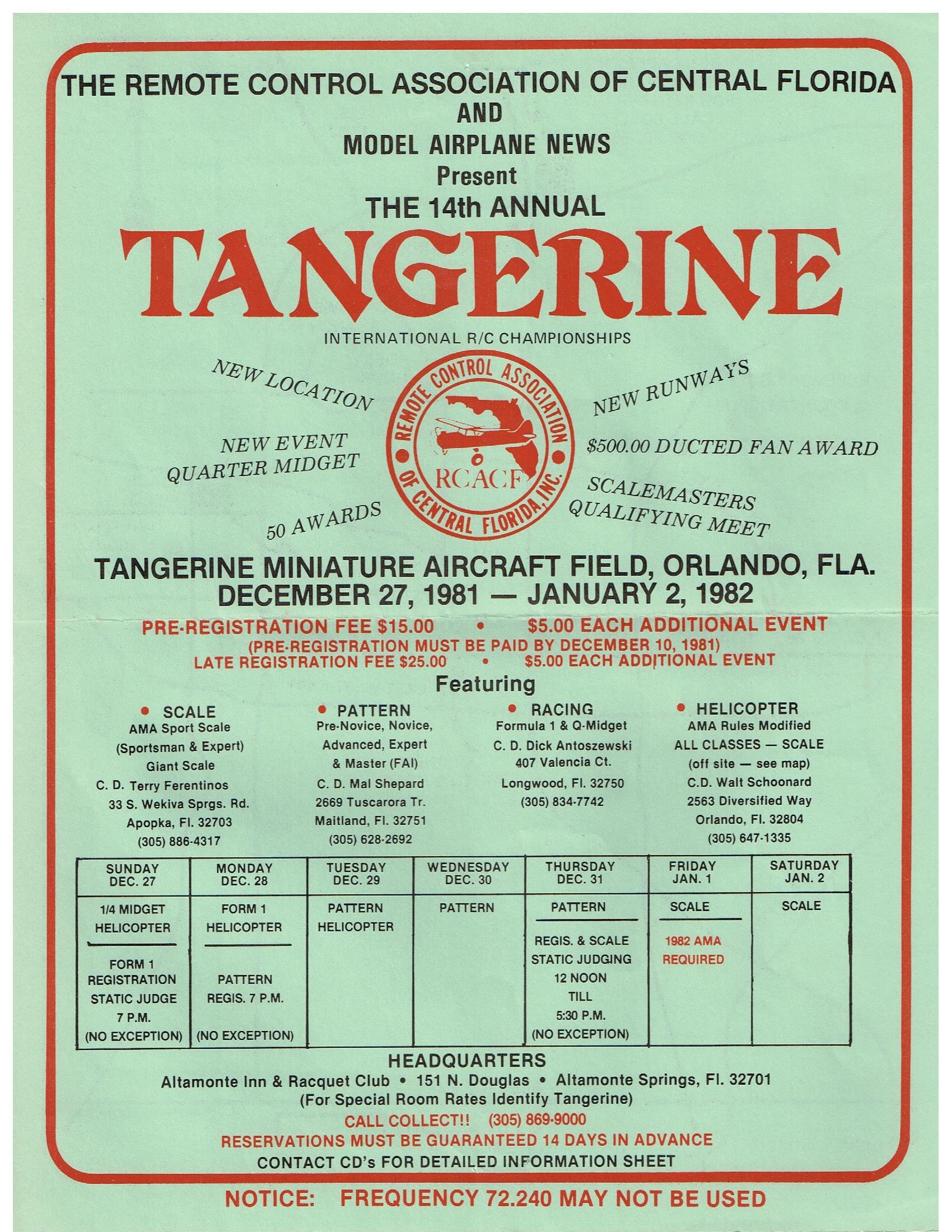
This is the document below I provided to enter this event in 1981. I have hidden my signature of course.
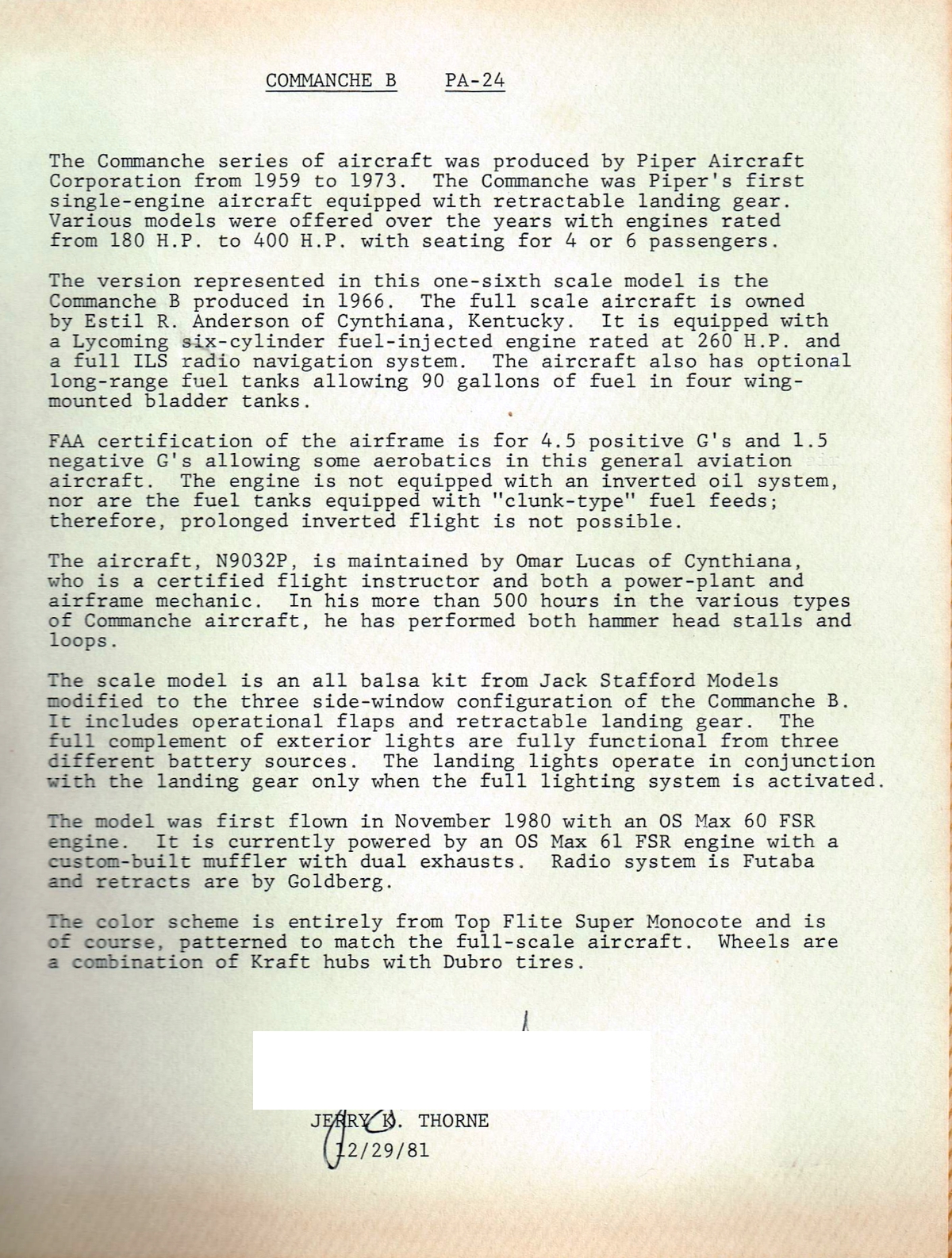
This is an original 8-inch by 10-inch photo I that has been scanned with the unfortunate RED tint that occurred in the photo paper over the years. RIGHT CLICK on either of the 8x10 images then save them to your hard drive.
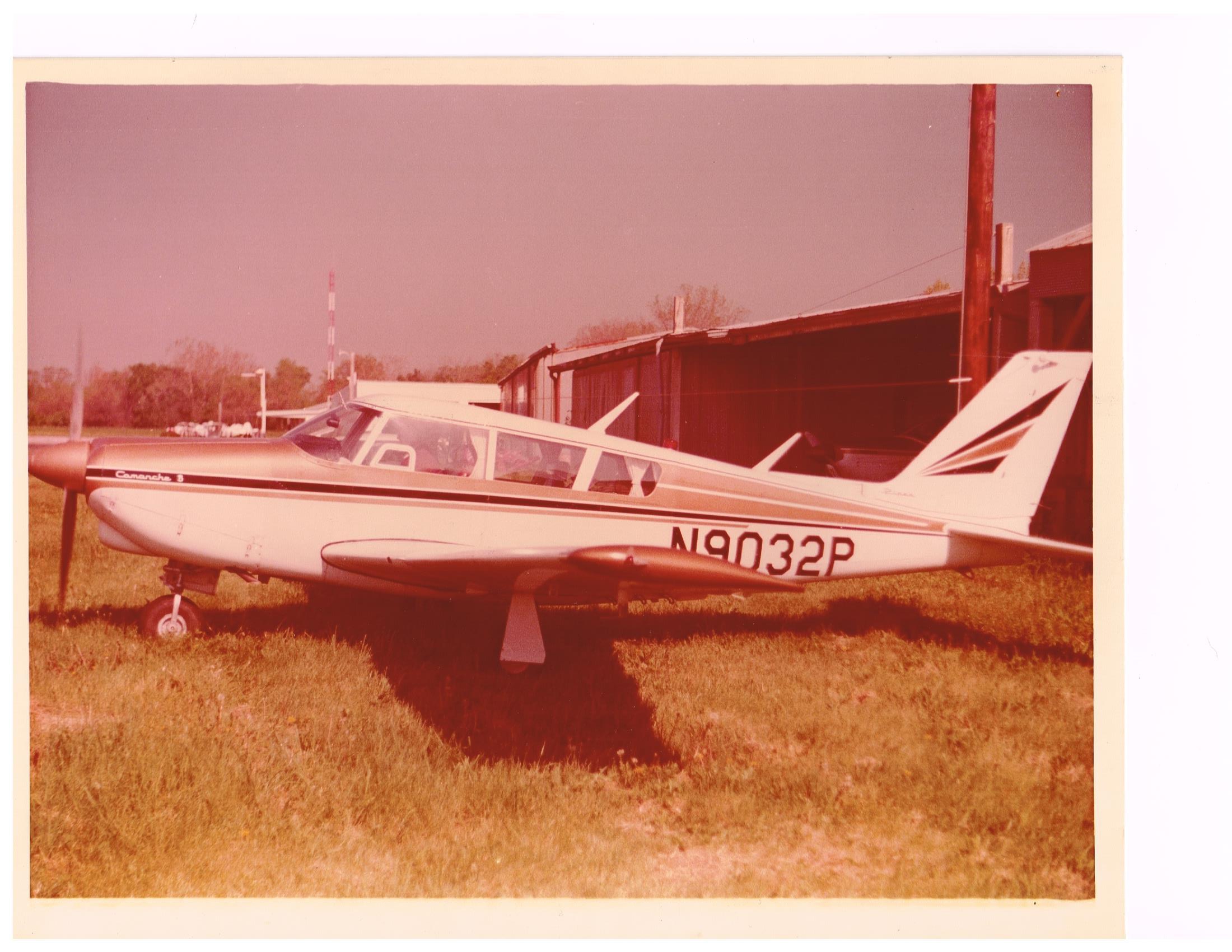
This is an original 8-inch by 10-inch photo I that has been scanned with the unfortunate RED tint removed by adjustments using Corel Photo Paint.
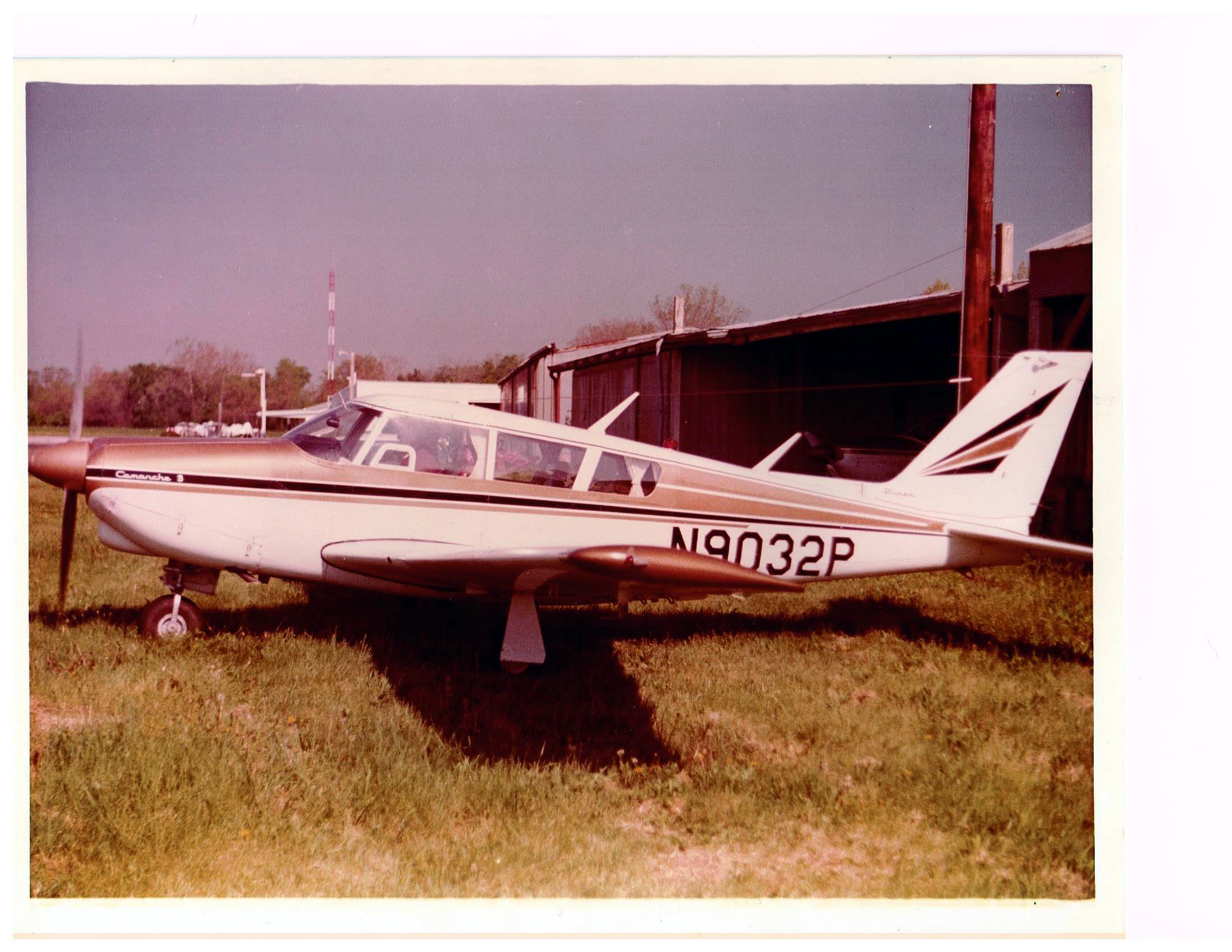
|
|